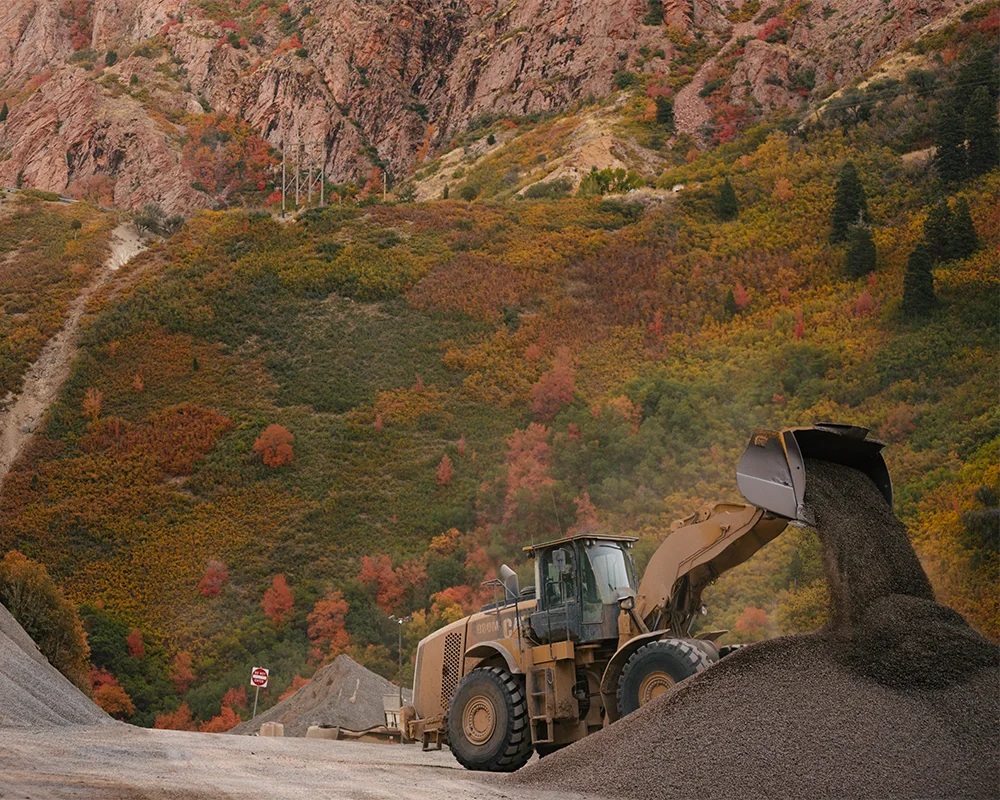Sustainability
New report reveals how data is supporting emission cuts in Canada’s construction industry
November 7, 2024
Gestionnaire principale de marketing de contenu

The Canadian construction industry—which employs more than 1.6 million people and contributes 7.4 percent to GDP—is laying the foundations to build a more resilient and environmentally friendly future. Thanks to the use of sustainable materials and building practices, it's redefining what it means to align with local and global climate goals while ensuring that Canada's communities and its workers remain protected.
According to a recent report by the Canadian Construction Association (CCA)—Climate resilience in construction: Building for a sustainable future—there is an urgent need for the industry to continue to play its part against the increasing threats of climate change. Published in September 2024, it highlights how the industry has already witnessed a surge in activity toward achieving its sustainability goals, reporting that emissions have “decreased from 230 tonnes in 2010 to 140.9 tonnes in 2022” per every million dollars invested in infrastructure and that this finding was “consistent across all provinces.”
The extensive report also notes that Canada’s construction industry is embracing “innovative strategies and technologies to mitigate its environmental impact” as part of a national approach to building resilient, future-focused infrastructure.
Building a sustainable future
Progress like this doesn’t happen overnight. However, based on this latest snapshot of the industry’s performance, there’s proof of a consolidated effort across the entire supply chain—from the largest construction firms to the smallest local contractors.
“From the heightened adoption of renewable energy sources to the widespread implementation of green building standards and the use of new technology and materials, the Canadian construction sector has thoroughly demonstrated a commitment to reducing its carbon footprint and enhancing environmental performance,” said the CCA.
But construction companies aren’t just looking at adopting eco-friendly building standards and materials. Tech-savvy firms are also looking at their entire supply chains—including their own vehicles—to see where they can minimize their carbon footprint. Increasingly, that means harnessing the power of data to create safer, more efficient, and more sustainable operations.
Technology’s role in sustainability
Samsara’s Connected Operations platform helps fleets to optimize their vehicle and equipment use while significantly reducing emissions—and fuel costs—via real-time data insights. Here’s how:
Samsara platform highlights
Real-time visibility into driver behaviour (and who may need more coaching)
Tracks unnecessary engine idling and fuel usage via comprehensive reporting
Provides real-time insights into route performance to target any inefficiencies
Offers visibility into equipment energy efficiency to help improve performance and reliability
By combining data-driven insights with optimized route planning and eco-friendly driving practices, Samsara’s platform helps construction operations boost efficiency, cut costs, and significantly reduce emissions—benefiting both Canadian businesses and the environment.
Summit Materials’ drive to net-zero
For Summit Materials, a construction firm who have operations spanning 22 U.S. states and B.C.'s Lower Mainland, the commitment to making a difference is a defining tenet of their operations. Their vision is to be the most socially responsible integrated construction materials solution provider on the market, with a target to achieve net zero emissions by 2050.
To do this, they use Samsara’s platform to monitor fuel usage and unnecessary engine idling across their fleet of approximately 4,000 vehicles. By streamlining their fuel management as part of their ongoing green initiative, they can accurately record emissions figures and set meaningful targets. Not only are they becoming increasingly sustainable, they also saved $1.8 million USD per year in fuel costs.
And they’re not alone. Scores of construction firms are using Samsara’s platform to improve safety, increase efficiency, and drive their sustainability goals with data-driven insights. Collectively, Samsara helps all its customers reduce their CO2 output by three billion pounds (1.36 billion kg) a year. That’s a lot of carbon that isn’t going into the atmosphere.
All of this goes to show what can be done when smart, connected technology is introduced to the construction industry. Whether that’s adopting renewable energy and green building standards, or leveraging connected fleet management systems like Samsara to drive fuel efficiency, companies are making incremental changes that collectively drive significant environmental impact.



